
Do you think our democracy is in danger? If so, do you want to do something to save it? I have found a way to travel virtually to key swing states, and personally reach out to over 100,000 potential voters during the upcoming mid-term political elections. Let me tell you about my no-cost, high-value approach.
I found my approach during the 2020 elections. Previously, in 2018, I had tried traveling in-person to Seattle to help elect Democrat Dr. Kim Schrier to Congress. Even though she won, my effort did not work out very well, since I was willing to work full-time, 15 hours a day for her campaign, but her Democratic Party operatives only let me work about 15 hours a week, phone banking and canvassing. They were so afraid of “trackers” – Republican spies – that they would not let me help more or become part of the inner workings of the campaign. And I found phone banking and in-person canvassing to be exhausting and inefficient, with a low “hit rate.” As a management analyst, I was not impressed.
So, in July 2020 I explored texting. I signed up on-line with Mission for Arizona, Red2BluePA, and FLVolunteerTeam2020 (all Democratic grassroots organizations), and received training in using Slack (a team management software) and GetThru/ThruText and Hustle (texting software packages). I started texting under the direction of team leaders, and was able to do about 400 texts per session at first.
These sessions all worked the same way. I would sign in to Slack and Zoom, get about 15 minutes of refresher training and a briefing on the goals for the day, then receive an assigned batch of 100 to 300 or more registered voters to contact via text on my laptop or smartphone. The list and phone numbers were usually obtained from voter rolls, and were mostly Democrats that I was helping to make a concrete plan to vote in the primary or general elections. The texting software provided me with an initial text message and with pre-written messages for almost any response, so I rarely had to write anything myself. I did not use my own phone number, and only my first name was revealed to the voter, so the few crazies I encountered could not track me down. I would usually get a response rate of about 15 percent.
Of these, perhaps a quarter were people asking me to “Stop Texting” (so by law I had to immediately remove them from our list), half wanted help with voting procedures, an eighth were willing to volunteer or “triple” (remind three friends and relatives to vote), and an eighth were hostile Republicans or wrong numbers. I was surprised at how often the Republican responses were QAnon or obscene – only about a third were polite, and the rest dropped “F-bombs” or other curse words.
Although the response rate was only about 15 percent, what I loved about this approach was that my “hit rate” was close to 100 percent – studies showed that almost every person would see the initial text, and would be reminded to vote. Since the vast majority of the lists were Democrats, I felt I was making a real difference, by getting out the vote (“GOTV” in campaign parlance), which is the key to winning. By contrast, when canvassing or calling, my hit rates were only about 10 percent or less.
There was no out-of-pocket travel or other costs to me in texting – I just spent an hour or two of my time on each session, completing multiple batches, while sitting on my couch at home. A major benefit of texting in multiple races was that I learned a lot about each state’s election laws, procedures, candidates and issues. It really was like traveling to that state and helping out in the campaign, but without the hassle, cost or risk of Covid.
All this is perfectly legal, by the way. It is of course legal to text across state lines. Under the FCC’s Telephone Consumer Protection Act, consumers cannot be pestered by unknown commercial sellers, but political calling and texting is allowed. And my texting was not automated spam, since I had to identify the voter on my list by manually clicking, then manually click again to send my initial message.
Over time in 2020 I signed up for 15 different campaigns. From July 22, 2020 through Election Day on November 3, 2020, I sent 85,776 texts. My highest session was 3900 texts. From November 17, 2020 to January 5, 2021 I was active in the two Georgia US Senate races, and sent 40,743 texts, with a high day of 10,000. So my grand total for the entire election cycle was 126,519 texts sent!
I participated in eleven winning campaigns, including Biden/Harris in six key states, the two US Senate races in Georgia, plus three down-ballot races. I was in six losing campaigns, including Biden/Harris in three states and three down-ballot races in Texas, Ohio and Pennsylvania.
Now, in 2022, I am well underway toward breaking my texting record. I have signed up with a very efficient outfit called NextGeneration (see Mobilize.US/NextGen/) and in only 15 sessions of texting over the last month have already sent 31,584 texts, for an average of 2106 texts per session. Our goal is mobilizing vital youth voters in key swing states such as Wisconsin, Arizona and Michigan.
Of course, I am a proud Democrat and want to save our democracy from autocracy and insanity. If you are Republican and want to “make America great again,” you can volunteer to send texts at gop.com/volunteer/. (By the way, did you know that Trump’s “MAGA” slogan was lifted from a speech by dictator Benito Mussolini? Sad. True. Instructive.)
May the sanest texting team win!
Photos courtesy Lew Toulmin
- Jose Nunez, digital expert from the 2020 Biden/Harris campaign, discusses the high value of GetThru/ThruTex to the success of the effort.
- A few of the 2000+ organizations and campaigns that GetThru/ThruText has assisted in texting efforts.
- An image of a GetThru/ThruText message being sent from a laptop in Maryland to Marguerette, a voter in Wisconsin, urging her to vote in the 2022 Wisconsin Democratic primary. She responds with “STOP” and hence must be opted out (removed) from the texting list. Her phone number was legally obtained from voter rolls. Last names on this and other images are crossed out by me in light blue, to preserve privacy. On the right are standard “survey” items, where information on the voter is recorded, and “responses,” where pre-written responses to the voter can be selected.
- A standard opt-out message being sent to a voter in Wisconsin in 2022.
- A voter in Florida in 2020 responds to a message urging her to vote for Biden/Harris in Florida; she calls Democrats “baby murderers.” The “replies” on the right are standard messages that can be sent to voters; “VBM” is vote by mail. The blue dots to the left of the voters’ names means that they have responded to the latest message, and need an answer.
- Elizabeth, a voter in Texas, responded to a text urging her to vote for M. J. Hegar for US Senate in 2020, and issued an obscene QAnon message – “SaveOurChildren” is a standard QAnon slogan. A significant portion of the Republican responses to my texts were QAnon, enough so that I reported the issue to my Democratic Party supervisors, and recommended that they tackle the problem seriously. They dismissed my request, stating that to respond to QAnoners would “only dignify them.” Two years later, it is clear that I was right to worry, and QAnon has become a major driving force in the Republican Party.
- Justin, a voter in Texas in 2020, is quite eloquent if misguided in his support of Trump in 2020. Deprogramming him, if that is possible, will likely take years or even decades.
- A different Justin, from Wisconsin in 2022, gets help in making a plan to vote early in the Democratic primary, and is asked to “triple” his vote by texting three friends.
- Sketch of a political texter, with his laptop and essential cup of coffee. (Courtesy of GetThru)











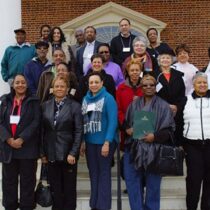



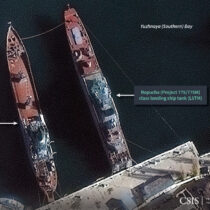



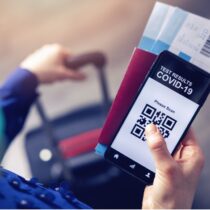



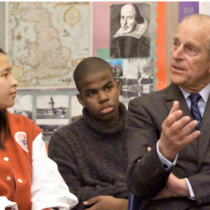


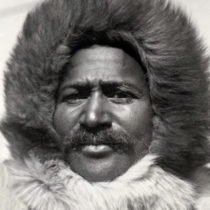

Comments are closed.